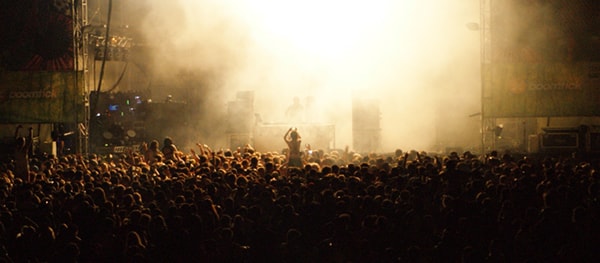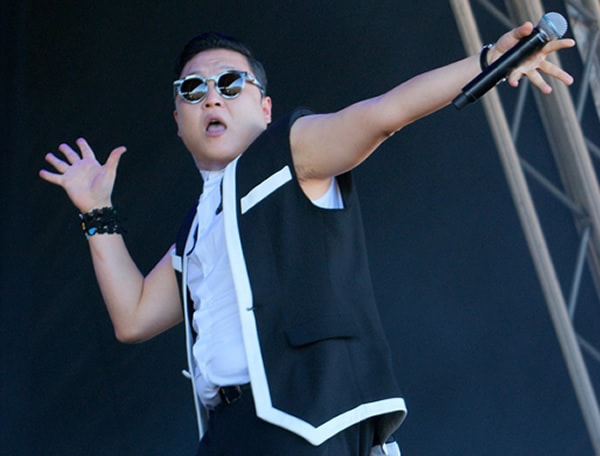So You Want To Be A Rockstar Photographer? (Part III)
You’ve established yourself as a competent and reliable photographer. You meet deadlines, you take great photos and the editor trusts you. You are a regular contributor. You are obviously not at the publication just to get the occasional free ticket and to revel in the social status of being on the door.
In the music scene, you have the respect of all concerned – musicians, other photographers, writers and promoters. They like your exemplary conduct. You are not a douche canoe and that is a huge tick in their boxes.

Now, it’s time to hit the big league. You have earned the right to take photos of national and international artists, and to hit the festival circuit.
Along the way, you will encounter chaos, ridiculous summer temperatures and more chaos. Plus people in Pikachu onesie costumes.
Part 1 – Getting a Photographer’s Pass – National and International Artists
Getting a photographer’s pass to a national or international artist is quite different to getting passes at local shows. Most promoters will have a form to fill. Sometimes your editor will fill it on your behalf, which makes your life easier—especially since promoters will often ask about your publication’s monthly distribution or unique hits. The editor is in the best position to offer those figures.
Other times, you will have to fill it yourself because they require particular personal details. Some will ask for your address and phone number (for arcane reasons I still don’t understand after all these years), plus a link to your portfolio as proof. Some may even ask for your camera make and model, so they can verify you are using a professional grade camera.
Occasionally the promoter just requires a simple email request, but most promoters are bombarded with emails so this is not their preferred method.
Part 2 – Getting a Photographer’s Pass – Music Festivals

For music festivals, the process is pretty much the same. Usually the festival website will have a page specifically for the media, including the form. If you are required to fill out the form yourself, that is where you will find it.
Some festivals have a PDF or hard-copy form because they require a signature – either physical or electronic. For hard-copy forms, they will give you a postal address, fax number or return email address to send scanned copies.
The best way to return them is through scanned copies because you will have a copy in your records and confirmation your email was sent. Fax machines can fail sometimes. As for sending through the post, you have to factor in the time required to reach the promoter. Most promoters look at the arrival date, not the date of postage.
Part 3 – Special Conditions
Congratulations! You have been waiting with bated breath, and have been told your application is approved. You have your first major assignment. Hurray!
Now, for the small print. In the media, good things come with conditions.
When you receive a copy of your confirmation, you will notice attached rules. Make the effort to read everything. No matter how boring, or the amount of legalese.
The conditions will outline your end of the bargain. The promoter gives you access to the artist or festival, and in return you have to play by their rules. The standard rule is you have access to the photographer’s pit for the first three songs only. After that, you are herded out. You also do not have access to the backstage area.
A handful of bands will allow you to take photos from the crowd after you have exited the photographer’s pit. Most bands will have a prohibition on any type of photography after the three songs.
Other bands may have different conditions. They might only allow you to take photos from the soundboard, which at festivals is usually located somewhere in the next suburb (hello, Bob Dylan – who threatened to storm off the stage if he saw a camera anywhere closer than said soundboard). Or they have a time limit, like five minutes (i.e. Mars Volta). Or one song, (i.e. Dengue Fever. In their defence, it was a 15min long song).
Some bands will prohibit you to use the photos anywhere other than on your publication. Which means you cannot exhibit, sell or put them on your online portfolio. Other bands are not as strict, which means you are free to do as you wish.
The reason for these rules is because photos of big bands can be big business. Bands usually have their own photographers and they will sell the photos afterwards. They might sell prints, use the photos for posters or use it for other merchandise (shirts, key rings, underwear because some people like to be intimate with their favourite band – anything, basically). Too many photos being distributed through the media dilutes their photos’ value.
If you neglect to play by the rules, you risk being removed from the concert or festival. Or your publication may be blacklisted by the promoter. The worst case scenario is being threatened with legal action if you use a photo against the usage policy.
Part 4 – The Big Day
It is the big day. Time to crack out your photographer’s magic.
Despite the fact that promoters are working for big bands and festivals – they are notoriously disorganised. Remember to keep a copy of your confirmation at hand, either in hard form or accessible on your phone. Confirmations are sometimes not forwarded to the door, hence they might not have your name. So you will have to prove that you do have permission.
Keep the media liaison’s number handy so you can call them if you encounter additional difficulties. Also, have your editor’s number so they can also help you out.
The entrance will usually have a media section where you can collect your pass. You will need to show some form of photo identification, such as a driver’s licence. Some passes will be on lanyards with your name and publication. Other passes will be in the form of a special wristband, or as a sticker. Do not lose these or you won’t be permitted into the pit.
The best way to approach taking photos at big concerts or festivals is to view it as any other gig. The principles behind taking photos are the same as local gigs. Fast reaction time? Check. Good action shots? Check. Avoidance of ‘microphone mouth’? Check. Being nice to other photographers? Check. Do not use flash under any circumstances? Check.
If you are taking photos at a festival, try to take photos of as many bands as possible. Some publications will specify which bands they want. Others will leave it to your discretion. The more bands you take, the happier your editor. Publications want a big gallery to make the reader feel as though they were there.
Remember to take social shots. That way, you can refer the people to your publication and drive up traffic. A good rule of thumb is to have at least a third of your photos dedicated to social shots. People at large concerts and festivals tend to be extroverted due to a combination of alcohol, excitement and possibly illicit drugs (weed and ecstasy are the most popular), so they will happily pose.
The photographer’s pit is the space between the front barrier and the stage. It is also used by security to patrol. Security concentrates on the crowd and may not care where you are standing. Therefore, make sure you are away from the security as much as possible because they have no compunction slamming into you on their way to an altercation.
The photographer’s pit is also very close to speakers. It is a good idea to bring ear plugs to protect your hearing. The best options are either custom-made ear plugs, or plugs like Hearos, which you can purchase at any musical instrument shop.
Be mindful of the audience as well as your fellow photographers. Most crowd barriers have in-built steps on the inside, to allow security to look over the crowd and pull people out. You can also use these steps to gain extra leverage to take photos, but use them sparingly so you don’t block people’s views.
Most festivals are held in the summer. You may find yourself racing from stage to stage in stifling heat, or having to wait in the wings for the pit to open in the hot, beating sun. Then you may have to wait without shade for the band to appear because they are not always on time. Remember to wear a hat, use sunscreen and keep hydrated. Also, schedule break times for food because you are likely to be on your feet for 10-12 hours.
You will encounter strange people at large concerts and festivals. This is almost always a given. Some of my more memorable experiences include having an excited young woman scream, “I LOVE CHINESE PEOPLE!” after finding out my ethnic background (she then gushed about her love of Chinese food and hugged me. Then had her friends give me a group hug. Then she tried to pole-dance on one of the support structures. Then it took six security guards to drag her literally kicking and screaming and punching out of the venue). Or two girls proclaiming their love before hugging and kissing me, then not wanting to let go because, “We love you. Don’t leave us.” Or the drunken guy who asked if I deliver fried wontons. Or the woman who asked if I was Psy’s sister because apparently all Asians are related.
If you encounter a strange person, nod and smile and then move on. You can regale your friends and family later.
One more time for emphasis – follow the rules. Do not give the promoters or security any reason to kick you out. They tend to follow the rules strictly and so should you.
Part 5 – Processing
When you get home, start processing photos straight away. Most festivals and large concerts will specify a requirement of published photos within 24 hours as part of their conditions, if you are with an online publication.
Yes, they have people hired specifically to look at websites, amongst their media duties. Yes, these people will check. Yes, they will give your editor grief if the condition is not met. Your editor will then be unhappy with you.
Sometimes publications will make a deal with the promoters to publish the photos within that time frame to make the publication more enticing, thereby increasing their chances for approval. In this case, the promoters may not always check but your editor certainly will.
If you do well at your first big photo opportunity, there is a great chance more will come. Happy snapping!
